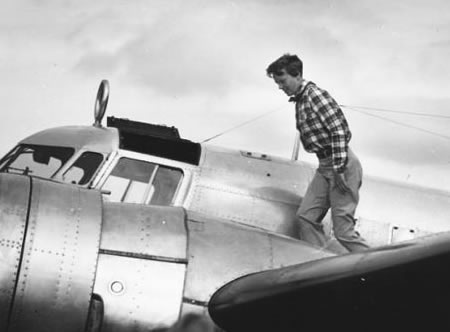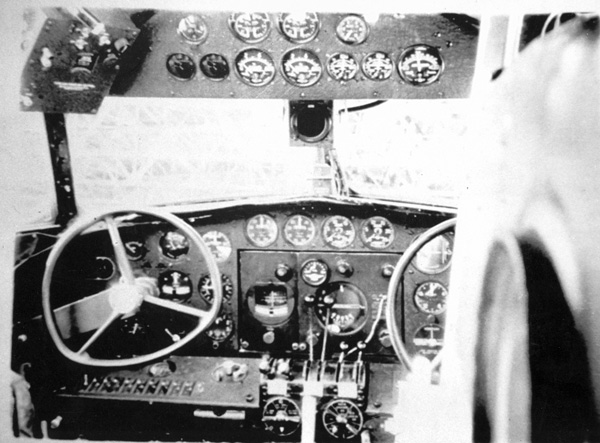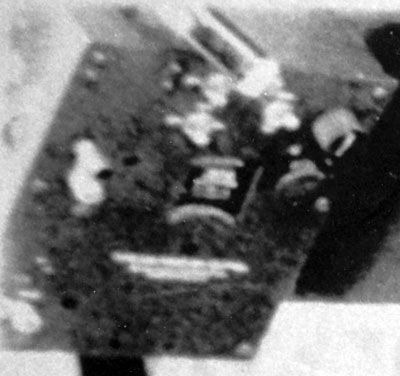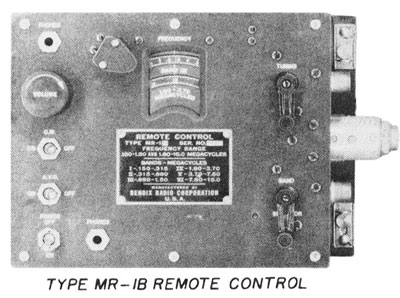|
||||
| Earhart Project Research Bulletin February 3, 2009 |
||||
| The “Miami” Cockpit Photo | ||||
Abstract
A photo purported to show the instrument panel of Amelia Earhart’s Lockheed “Electra” in Miami in May 1937 has been cited by some researchers to support the hypothesis that there was a Bendix High Frequency Direction Finder (HFDF) radio receiver aboard the aircraft during Earhart’s second world flight attempt. Popular speculation holds that the large box at the upper left of the photo is a prototype control box for that receiver. This paper presents photographic evidence that the photo does not support the hypothesis. |
||||
| Introduction | ||||
Amelia Earhart’s failure to find Howland Island on the morning of July 2, 1937 was a radio navigation failure. Her announced intention was to find the island by using her Radio Direction Finder (RDF) to take bearings on signals sent by the Coast Guard cutter Itasca standing offshore Howland. In her pre-flight messages to the Coast Guard and in a radio transmission during the actual flight, she asked Itasca to transmit on 7500 kilocycles (kcs). Itasca sent the signals as requested and Earhart was unable to take a bearing. In earlier messages she listed the upper frequency limit of her RDF variously as 1500 kcs and 4800 kcs. Why would she ask for signals on 7500 kcs – a frequency she couldn’t use? Was she that ignorant and confused about the limitations of her equipment? Or did she have high frequency (HF) RDF receiving capability that she didn’t, or even couldn’t, tell the Coast Guard about? Researchers who favor the latter explanation point to a photo alleged to show the instrument panel of Earhart’s aircraft in Miami in May 1937. A large box at the upper left of the photo shows some similarity to the Bendix Type MR-1B remote control for the Bendix RA-1B receiver which came into use shortly before WWII. Speculation holds that the box in the photo is a prototype remote for an earlier version of the RA-1B receiver with HFDF capability (below).
Lockheed documents and Bureau of Air Commerce inspection reports indicate that there was a single Western Electric 20B receiver aboard Earhart’s Electra. Photos show that from early March 1937 onward, the aircraft was equipped with a Bendix MN-5 loop antenna. The Bendix loop could be used with the Western Electric receiver, but was there a second, perhaps secret, Bendix HFDF receiver aboard when the Electra left Miami on Earhart’s second attempt to fly around the world? If the photo showing the remote control box really does portray the Electra’s instrument panel as it was when Earhart and Noonan publicly began the second world flight attempt on June 1, 1937, the presence of the unidentified box is a compelling argument for the presence of a second receiver. |
||||
| Hypothesis | ||||
| The photo showing the unidentified control box was taken in Miami between the time Earhart arrived there on May 23 and her departure for San Juan, Puerto Rico on June 1, 1937. |
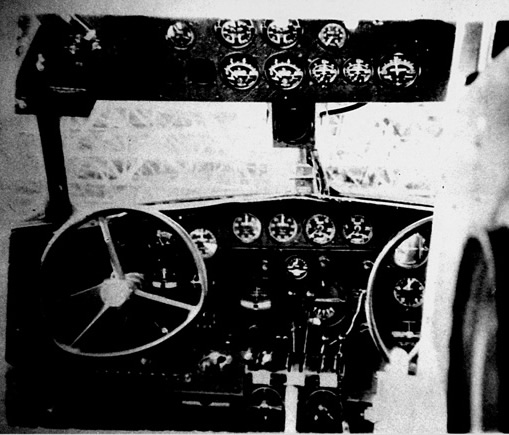 Although
at first the photo would appear to provide no clue as to where it was taken,
reducing the brightness and increasing the contrast in Photoshop™
reveals a curious and distinctive background visible through the windshield (right).
A complex geometric pattern is overlaid on a horizontally corrugated surface. The
angle of view through the windshield when the aircraft is parked on the ground
is 12° above horizontal, so we’re looking at something high or even
above the aircraft, depending upon how far away it is.
Although
at first the photo would appear to provide no clue as to where it was taken,
reducing the brightness and increasing the contrast in Photoshop™
reveals a curious and distinctive background visible through the windshield (right).
A complex geometric pattern is overlaid on a horizontally corrugated surface. The
angle of view through the windshield when the aircraft is parked on the ground
is 12° above horizontal, so we’re looking at something high or even
above the aircraft, depending upon how far away it is.
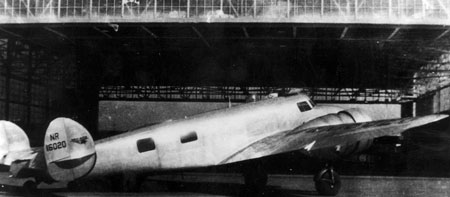
In the photo above the Electra features the faired blister on the tip of the fuselage that housed the loop antenna for the Bendix/Hooven Radio Compass installed in October 1936 and the dorsal V antenna installed by Bell Laboratories in November of that year. The Radio Compass was removed in early March 1937. In other words, this photo was taken sometime between November 1936 and early March 1937. NR16020 was never in Miami during that period. This photo was not taken in Miami. So where was this hangar? The type of construction appears to be consistent with the hangars at Burbank where the Electra was based (left, detail, and below).
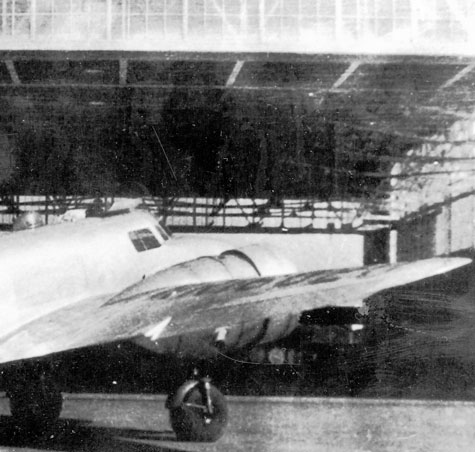
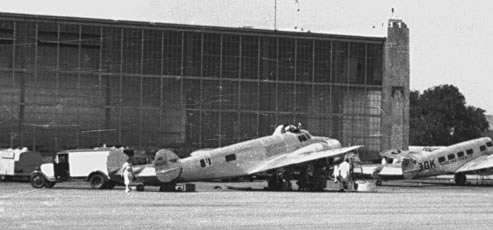
(Photo courtesy http://www.pbase.com/airlinerphotos/airports_oldmiami.)
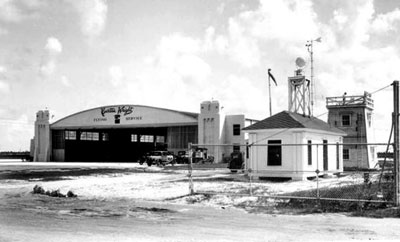
The best way to date the photo is to try to track the box in datable photos. For example, the box is clearly not present in this photo taken at Purdue University in September 1936 (right). At this time the aircraft had only the Western Electric transmitter and receiver it was delivered with in July.
The earliest datable photo that appears to show the box was taken after Harry Manning arrived in Burbank in late February 1937, below.
Another photo taken at the same time (right)shows that the fairing for the Bendix/Hooven Radio Compass loop antenna is still present. The Radio Compass was replaced with a conventional loop antenna on or about March 6.
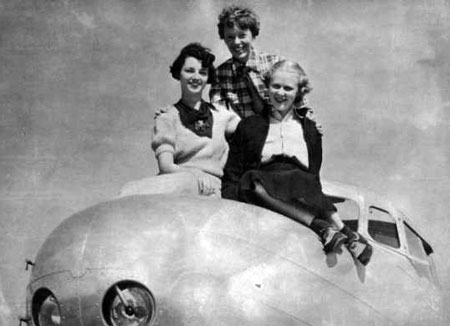
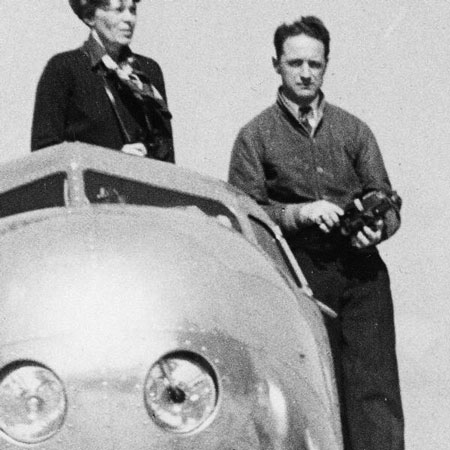
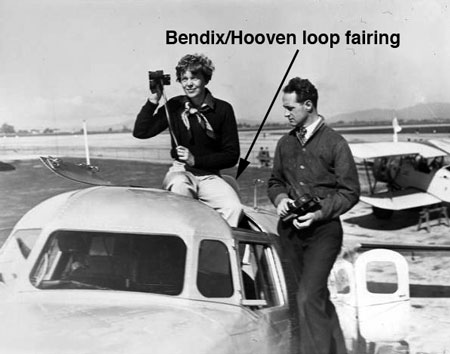
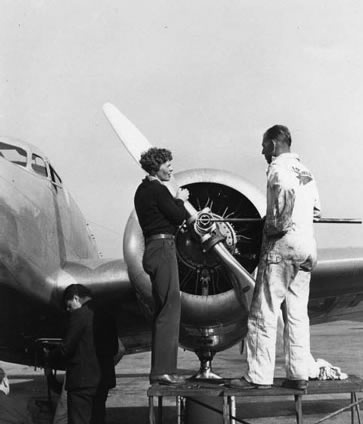 In
this photo, Earhart is wearing the same sweater as in the photos with Manning
but with darker slacks, so it’s
probably a different day. The box is clearly present.
In
this photo, Earhart is wearing the same sweater as in the photos with Manning
but with darker slacks, so it’s
probably a different day. The box is clearly present.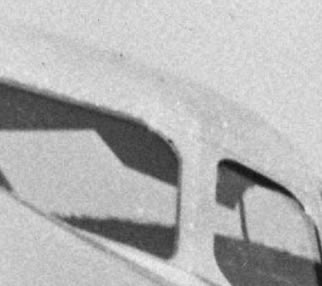
Another picture taken during the same photo op (below, left) shows that the conventional loop antenna has now been installed. The box, again, is clearly there but it’s not possible to tell whether the Bendix/Hooven Radio Compass has yet been removed.
So the box was present when the Bendix/Hooven Radio Compass was aboard the aircraft. Was it still there after the Radio Compass was removed? Two very similar photos of AE in the cockpit suggest that the box went away at the same time the Radio Compass went away.
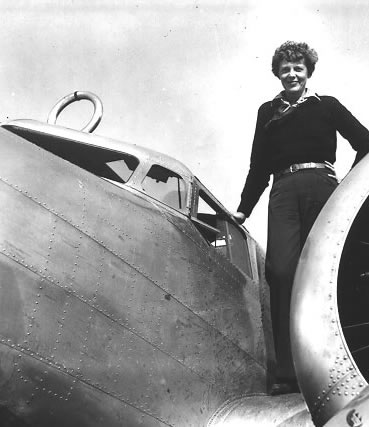
In the undated photo below the box can be seen just below the tubular
instrument light.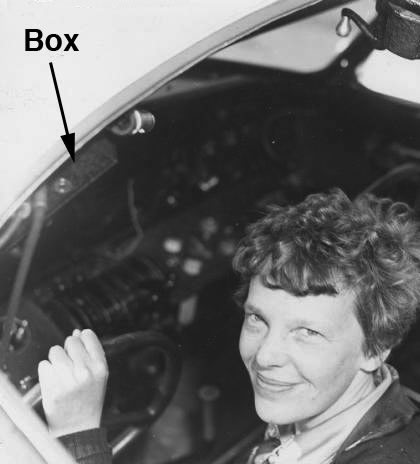
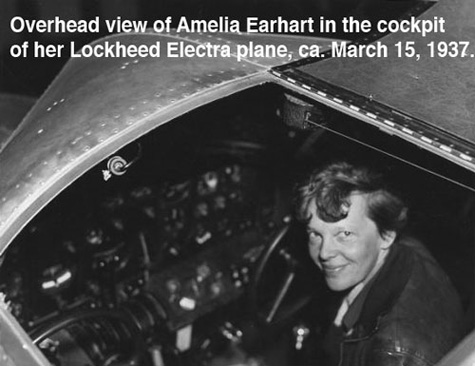
In the photo at left the box is no longer present. The Purdue University website captions this photo “Overhead view of Amelia Earhart in the cockpit of her Lockheed Electra plane, ca. March 15, 1937” (Purdue photo b10f7i25). Purdue captions are not always correct but, comparing the two photos, it’s apparent from the length of AE’s hair that the photo that shows the box predates the one in which the box has been removed.
The photo below was taken in Carapito, Venezuela on June 2nd or 3rd, 1937. No box is apparent.
